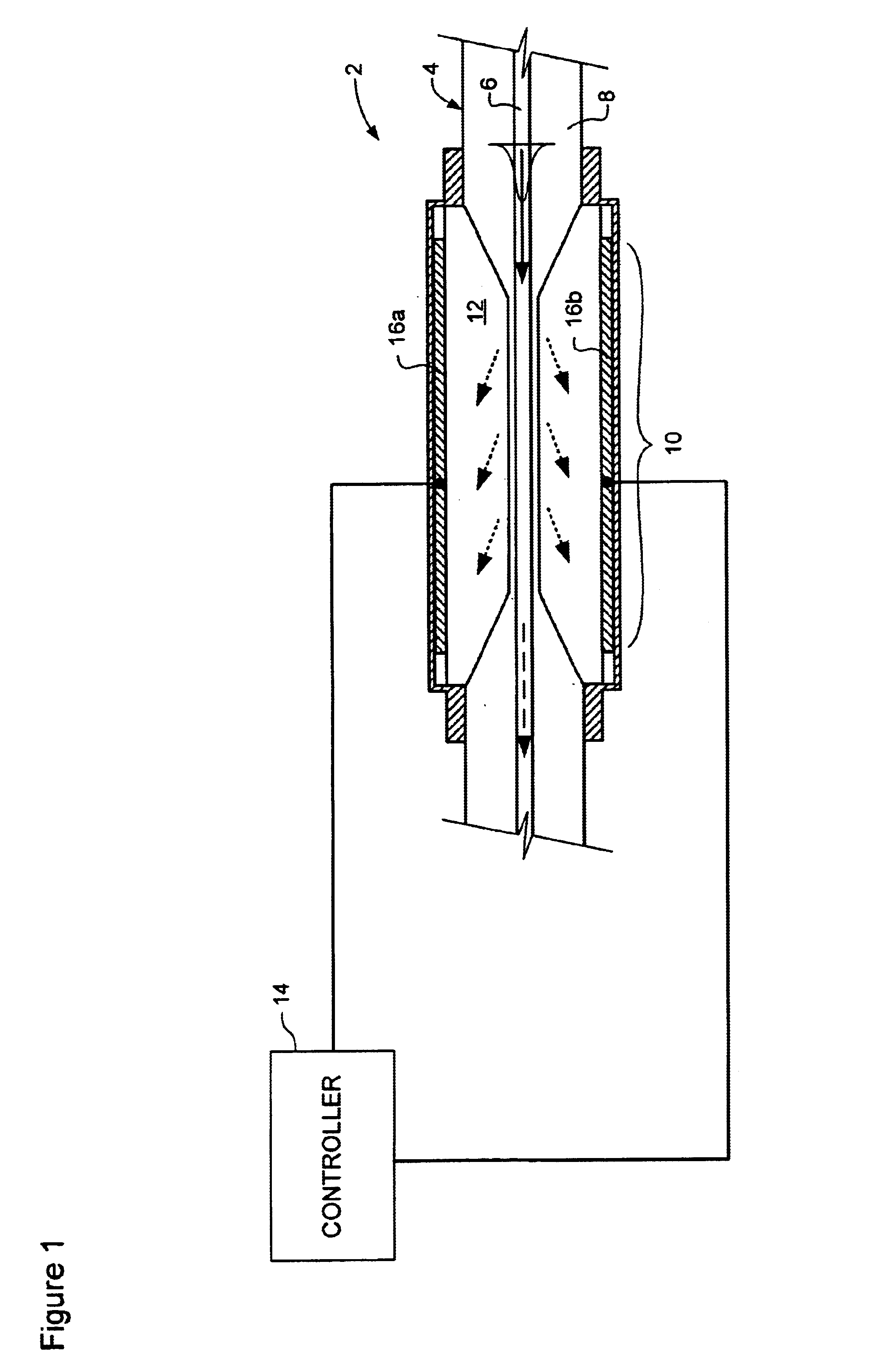In-guide control of optical propagation
a control device and optical propagation technology, applied in the direction of optics, optical light guides, instruments, etc., can solve the problems of stability of the system, out-of-fiber systems, and difficulty in manufacturing the components of the micro-optical system, and achieve high efficiency
- Summary
- Abstract
- Description
- Claims
- Application Information
AI Technical Summary
Benefits of technology
Problems solved by technology
Method used
Image
Examples
Embodiment Construction
The present invention provides an optical device designed to control propagation of light within the core of an optical waveguide, such as a fiber. Variants of the optical device may be used in optical communication systems as a tunable filter, optical attenuator, delay line etc. FIG. 1 schematically illustrates principle elements of an embodiment of the present invention.
As shown in FIG. 1, the optical device 2 generally comprises an optical waveguide 4 having a core 6 surrounded by a cladding 8 having a substantially fixed index of refraction. A control region 10 is formed in the waveguide 4, in which a radial thickness of the cladding 8 is reduced to less than the penetration depth of an evanescent field of light propagating in the waveguide core 6. A variable-index material 12 is disposed around the cladding 8 at least within the control region 10, and thus is capable of interaction with the evanescent field of light in the core 6. The variable-index material 12 has an index of ...
PUM
| Property | Measurement | Unit |
|---|---|---|
| index of refraction | aaaaa | aaaaa |
| radial thickness | aaaaa | aaaaa |
| evanescent field | aaaaa | aaaaa |
Abstract
Description
Claims
Application Information
 Login to View More
Login to View More - R&D
- Intellectual Property
- Life Sciences
- Materials
- Tech Scout
- Unparalleled Data Quality
- Higher Quality Content
- 60% Fewer Hallucinations
Browse by: Latest US Patents, China's latest patents, Technical Efficacy Thesaurus, Application Domain, Technology Topic, Popular Technical Reports.
© 2025 PatSnap. All rights reserved.Legal|Privacy policy|Modern Slavery Act Transparency Statement|Sitemap|About US| Contact US: help@patsnap.com



